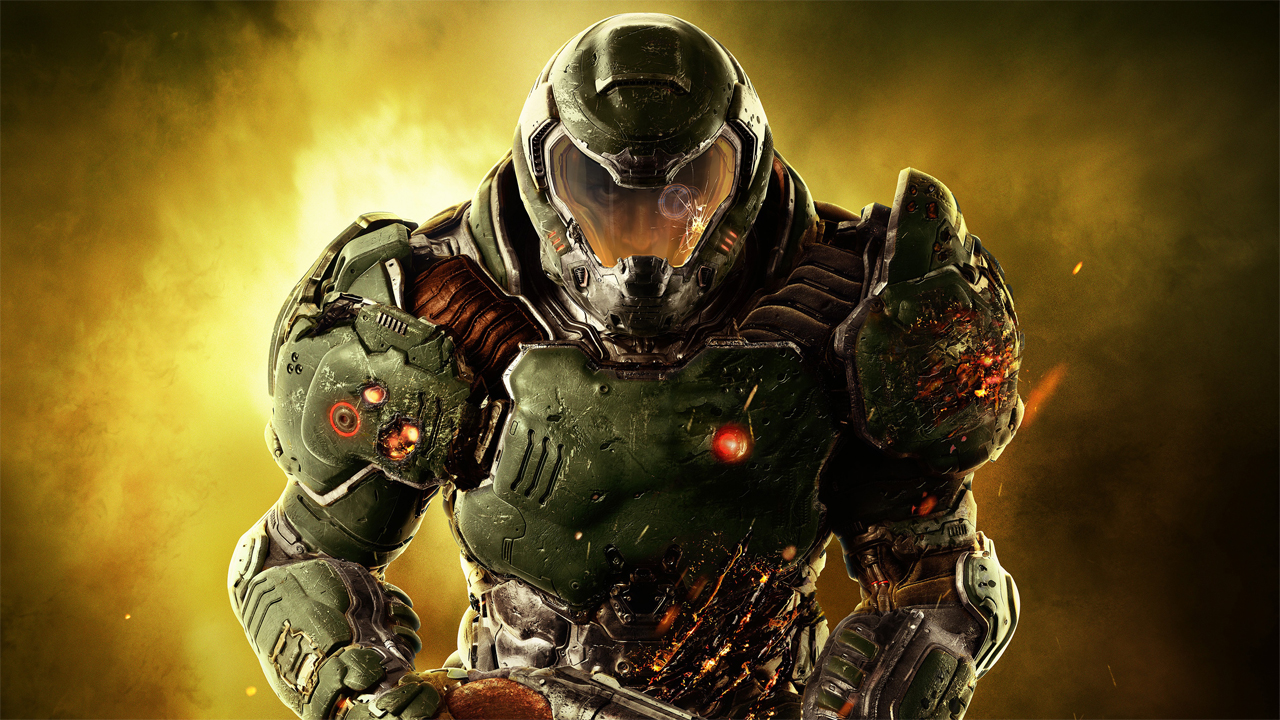 Picture above… the titular character of DOOM, the doom slayer (DOOM on Steam).
Picture above… the titular character of DOOM, the doom slayer (DOOM on Steam).
Examples of innovative soundtrack composition can be heard throughout the 2016 reboot of DOOM. DOOM is a first-person shooter game; players assume the role of the doom slayer as he journeys through realms of hell to conquer ghosts and demons. The doom slayer ultimately aims to prevent the destruction of the human race. The soundtrack from the 2016 DOOM reboot was written and performed by prolific video game sound designer Mick Gordon. In a 2020 interview with Happy Magazine, Gordon explained one specific recording process he utilized on the soundtrack. This technique involved feeding various wave forms through a chain of effects to produce a frenetic sound, reminiscent of static-electricity (Cameron, 2020). Gordon explained his motive for employing such a recording technique, saying, “So I’d send my synth sine waves and stuff through it, but instead of just having random noise, I’d have these electromagnetic things. So, it’s almost like you have the music of DOOM pumping away, and then the electromagnetic ghosts are being affected by it, in a way” (Cameron, 2020). Mick Gordon’s explanation aptly summarizes a sound designer’s pursuit of audio enhancement; the final product of his wave form experimentation serves as a sonic interpretation of the demons and ghosts depicted in DOOM, rather than just a separate, overtly ‘musical’ companion piece.

 For the reader to note… the following are additional examples of Mick Gordon’s sound design: 2017’s Wolfenstein II and 2013’s Killer Instinct Reboot, Season 1 (MICK GORDAN).
For the reader to note… the following are additional examples of Mick Gordon’s sound design: 2017’s Wolfenstein II and 2013’s Killer Instinct Reboot, Season 1 (MICK GORDAN).
In our own team’s interview with Mick Gordon, he further discussed elements of his compositional process, saying, “There are patterns I end up following, subconsciously. Motific development is really important… building on an established theme. Another thing is when I write, I like to map out the game in a narrative context. Like, here’s where it builds, here’s where it slows; it’s really based on what’s happening to the player”.
As Gordon states, video games exhibit a similar trend of building in intensity and difficulty throughout gameplay. And yet, levels of intensity and action invariably fluctuate from scene to scene; DOOM builds in intensity at an exponential rate, without any inverse variation in pace. In our interview, Gordon discussed methods he utilized to tackle the daunting task of composing in sync with DOOM’s pacing, saying, “I felt as if melody could take a backseat on that one… you know, I could create the greatest harmonic masterpiece, but if it didn’t fit the game, it wouldn’t matter. This lone soldier is trekking through this hellish landscape of demons… running and jumping and climbing. I needed to create music that could match, and even outpace, the pace of the DOOM Slayer”.